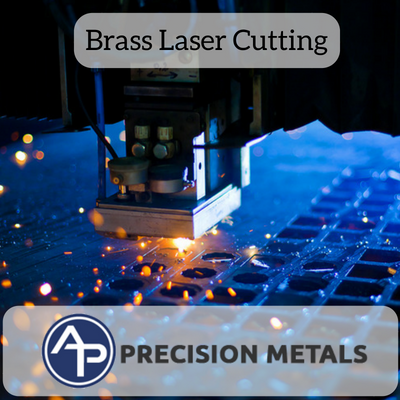
BRASS LASER CUTTING
How Brass Laser Cutting Works

What is Laser Cutting?
Laser cutting was developed in the 1960s to provide a precise and reliable way to cut sheet metal and plastics without causing warping or other damage. This process cuts material within fractions of an inch to accuracy with very little manual labor. Laser cutting also allows for easier processing of holes, sharp corners, highly detailed lines, and other complex cuts that can be hard to do by hand. This technology improves accuracy while limiting waste.
The Difference with Brass Laser Cutting
Although the basic principles of brass laser cutting and traditional laser cutting are the same, there are slight differences due to the specific material qualities of brass and brass alloys. Brass is more reflective than steel, and therefore responds differently to the laser beam used in laser cutting. Advanced metal fabrication shops use a shorter wavelength beam to tackle this issue. This allows for less reflectivity and a more precise cut. They also assist the cut using Nitrogen gas, instead of the CO2 or oxygen. This reacts optimally with the brass to provide less drag and a more efficient cut. In addition, a skilled fabricator will use a different laser angel and speed when it comes to laser cutting brass.
Brass Laser Cutting Techniques
In order to get excellent results for our clients, we use a combination of different techniques and approaches for each job. For example, when working with clients that are designing and manufacturing electronic components, we must consider the gauge and brass alloy before planning out the best way to cut the parts. For our architectural or interior design clients, we’ll consider other factors like the chemical finish they’ll be adding, their turnaround time, and how exact each cut needs to be. Factors like thickness, number of parts, type of allow, visual finishes, and quality assurance needs help us determine the best techniques for each brass laser cutting job.
Industries That Use Brass Laser Cutting
We’ve found that there are an increasing number of industries that are using brass laser cutting to process their products. Crafts people, interior designers, lighting designers, and jewelry artisans have discovered that laser cut brass can be used to produce cost effective and high-end looking products. For example, you’ll often see brass house number signs, pendants, or furniture accents sold for an affordable price in home goods stores. Traditional and commercial musical instrument makers are turning to laser cutting to get more precise results while allowing for more design and polishing time.
Where to Start
If you have a brass laser cutting project in mind, reach out to a local machine shop. Double check that they have the appropriate facilities and experience for brass laser cutting, then ask them about their file preparation requirements. If you do not have the skills or resources to produce the computer file for cutting your piece, they may be able to do it for you or point you in the right direction.